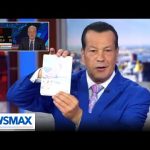President Trump’s tariffs, described as the largest federal tax hike since Lyndon Johnson’s presidency, are framed around three core rationales: , , and . Here’s how these motivations intersect with his policies:
### 1.
Tariffs function as taxes on imports, and Trump has emphasized their potential to offset federal revenue losses from proposed tax cuts. For example, his administration has suggested using tariff income to finance extensions of his 2017 tax cuts, which could reduce federal revenue by $4.5 trillion over a decade. Critics argue this approach disproportionately benefits higher-income households while placing financial strain on small businesses and consumers.
—
### 2.
Trump has repeatedly cited national security and domestic manufacturing as justification for tariffs. His administration declared a under the International Emergency Economic Powers Act (IEEPA), linking trade deficits to the erosion of U.S. manufacturing and supply-chain vulnerabilities. The White House claims tariffs will “re-shore” production, reduce reliance on foreign adversaries like China, and combat issues like fentanyl trafficking. However, economists warn that tariffs could deepen economic stagnation and consumer price hikes, akin to the 1930 Smoot-Hawley tariffs.
—
### 3.
Reciprocity is Trump’s most frequently cited goal. He argues that foreign nations exploit low U.S. tariffs while imposing higher rates on American goods, creating an uneven playing field. The on all imports, paired with country-specific rates (e.g., 34% on China, 20% on the EU), aims to mirror other nations’ trade barriers. For instance:
| | | Rationale |
|————-|—————–|—————————————————————————|
| China | 34% (+20% existing) | Retaliation for non-tariff barriers, intellectual property theft. |
| EU | 20% | Countering VAT and regulatory barriers. |
| Australia | 10% | Lower trade imbalances, no added reciprocity. |
Trump claims these measures will force trading partners to renegotiate terms, though White House officials have sent mixed signals about whether tariffs are temporary or permanent.
—
###
While revenue and protectionism play roles, is the cornerstone of Trump’s tariff agenda, as evidenced by his repeated appeals to “fair trade” and bilateral rebalancing. However, the policy’s ambiguity—oscillating between a negotiating tactic and a long-term economic strategy—has sparked legal challenges and market uncertainty. Small businesses, already grappling with supply-chain disruptions, warn the tariffs could price them out of markets entirely.
In summary, Trump’s tariffs blend all three rationales, but reciprocity remains the stated priority, even as critics question its feasibility and economic fallout.



